Survivance
North Carolina’s American Indian tribes have partnered with Campbell University to train its members to become better leaders. For the state’s indigenous people, the alliance is a step toward overcoming a complicated history and becoming a stronger voice in the state.
By Billy Liggett | Photos by Ben Brown
The legend passed down over generations of Coharie Indians tells a story of mothers gathering their children as strangers approached their village, whispering “shhhh” to quiet them until the potential threat was gone. That same sound, they say, can be heard to this day, a whisper that blows through the tall pine trees that grow along muddy banks of the Little Coharie River, just 30 miles from Campbell University’s main campus.

Descendants of the Neusiok Indians, the Coharie first settled along the river — located near the present-day Harnett and Sampson county line — sometime between 1729 and 1746. For nearly 300 years, the relationship between the Coharie and their river has been symbiotic. The water that once provided fish and crops to their people now provides nourishment to the mental health of today’s Coharie. Caring for and cleaning the river is a healing medicine to many of its more than 3,000 members.
There’s a small painting on Greg Jacob’s desk in his tribal administrator office at Coharie Tribe headquarters. It’s the same room he sat in as a third grader, a student of the Coharie School before desegregation sent him to a mostly white school in Clinton in the 1960s. The painting depicts a young woman in a canoe, surrounded by the silhouette of tall trees, the river taking her toward a yellow sunset and a bold red sky.
Asked about the painting, the man who has led the Coharie for nearly 45 years picks up the small canvas and smiles.
“A young woman painted this for me,” he starts. “She had a special connection with our river. She once turned down an invitation to go to a Lumbee pow wow that her boyfriend was the head dancer for so she could spend a day on the water. She said her heart had been really heavy that day, and there were burdens and other things going on that she just needed to figure out.”
The river, she told Jacobs, was a place she could go and lay those burdens down.
“The currents of the water would send those burdens away and bring her peace. And this painting represented that,” Jacobs says before revealing the identity of the artist — his granddaughter.
In 2015, Jacobs and the tribe launched the Great Coharie River Initiative, a gift to not only his granddaughter to but to all Coharie people. For the past seven years, the Coharie have cleared the 13-mile stretch of water that runs along U.S. 421 of trees and debris from recent hurricanes and storms — all with a goal of making it accessible to everyone. It’s become a place where visitors can kayak and take in the beauty. A place where his granddaughter can find peace.
“A beautiful gift to all people.”

The Coharie are one of eight recognized Native American tribes in North Carolina, joining the Eastern Band of Cherokee Indians, the Haliwa-Saponi, the Meherrin, the Occaneechi Band of the Saponi Nation, the Waccamaw Siouan, the Sappony, and the state’s largest tribe, the Lumbee. Today, North Carolina is home to the largest American Indian population east of the Mississippi River and the eighth-largest overall in the U.S. More than 120,000 North Carolinians identify as Native American, making up just over 1 percent of the state’s population.
The eight tribes came together in 1971 with the General Assembly to form the North Carolina Commission of Indian Affairs, a unified group of 21 representatives who serve as the voice of their people in state government affairs, fighting for everything from more funding to the elimination of offensive Indian mascots from North Carolina high schools.
Fifty years after its start, the commission has found a partner in Campbell University, a relationship made possible by Dr. Alfred Bryant, dean of Campbell’s School of Education & Human Sciences and a native Lumbee American Indian. In just the past year, Campbell has hosted three commission meetings, sent medical school students out to provide COVID vaccination clinics to tribes and hosted several health care-related events.
And that’s just the beginning. In the spring, Campbell and its Lundy-Fetterman School of Business will work with the commission to launch a training program for tribal leaders, covering topics like tribal financing and grant writing, as well as training them to become better communicators and a stronger voice in their communities.
“I see this program directly benefiting each of these tribes,” says Bryant. “Once these men and women finish this program, they will return more confident, armed with a whole new set of skills. They’ll better understand what a budget looks like, maybe better understand the role of policies and how to write one, understand the role of a council committee and perhaps be better at team building and working with others toward a common goal.
“Just helping people understand that when you’re elected or appointed to lead, you aren’t just doing it because it’s something that looks good on your resume. There’s a big expectation behind it. You are here to make your tribe better. And that’s a huge responsibility.”
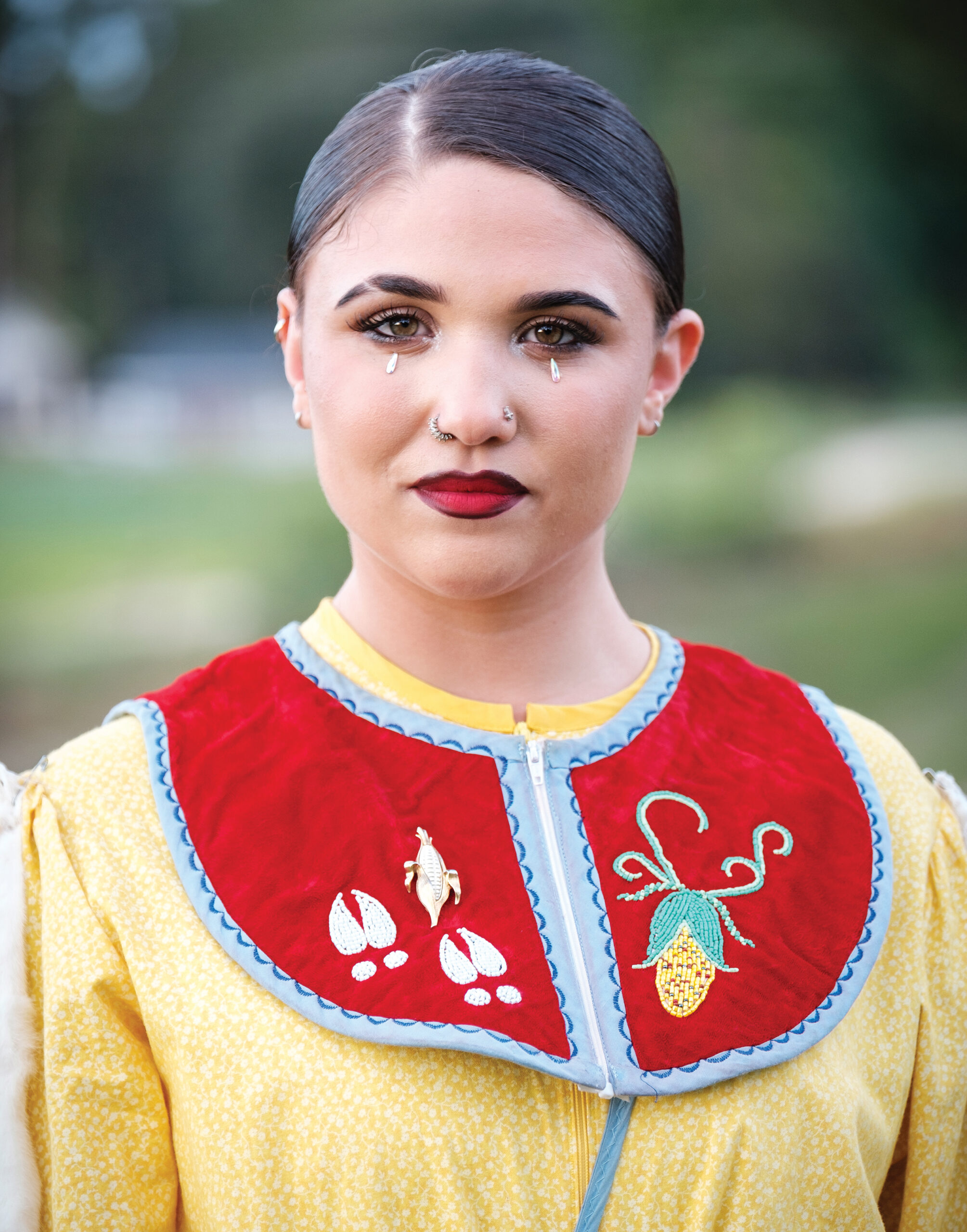
Survivance, when used in Native American studies, invokes “an active sense of presence.” It is a continuance of native stories. A survivable name.
“Native survivance stories are renunciations of dominance, tragedy and victimry,” writes Dr. Gerald Vizenor, a member of the White Earth Nation of the Anishinaabe Tribe in Minnesota and a professor emeritus at the University of California, Berkeley. Vizenor uses the term in his 1999 book, “Manifest Manners: Narratives of Postindian Survivance” and in a 2008 follow-up that examines survivance in Native American literature.
Survival and resistance. They are words Greg Jacobs knows well.
Through the sixth grade, Jacobs and other Coharie children attended school in the same long, white building in Sampson County that serves as tribal headquarters today. In 1966, nine years after Dorothy Counts became the first Black student to attend an all-white North Carolina high school, Jacobs and seven of his classmates were among the first minority students to attend middle school and high school in Clinton. Recalling his first day in this intimidating environment still stirs emotions.
“We had an assembly on that first day, and we were already scared. We already had this low self-image. We looked different. We didn’t know anybody,” he says. “I knew it could get ugly, because this was Clinton, where we couldn’t eat in restaurants unless we came in through the back door, or we were told, ‘We can serve your family, but you’ll have to stand up to eat.’ So there was a lot of fear that day. A lot for a little 13-year-old boy to have to face.”
In his new class, his math teacher asked Jacobs and his classmates to take out their books and turn to “Exercise 3, Page 15.” It was a math problem — a refresher for his classmates, but a foreign language to Jacobs.
“I was afraid to look up. Afraid to look in the eyes of my teacher. Afraid to look at my classmates. And so I started crying. I couldn’t do the first thing my new teacher asked me to do, so I cried.”
Ms. Wallace — a name Jacobs will never forget — patted Jacobs on his back and whispered to him, “Don’t worry. We’ll help you. We’ll get you through this.”
Jacobs ended the year the No. 2 student in his class. He would go on to graduate high school, earn a college degree and become tribal administrator in 1978. He would graduate from the inaugural N.C. Native Leadership Institute in 2014. He’d become a vocal leader for the N.C. Commission of Indian Affairs and lead a massive initiative to clean and maintain a river.
A renunciation of victimry.
“If I had been a horse in a horse race, I would have been the one who started slow, came from behind and won it all,” Jacobs says. “I had the potential. All I needed was the opportunity.”
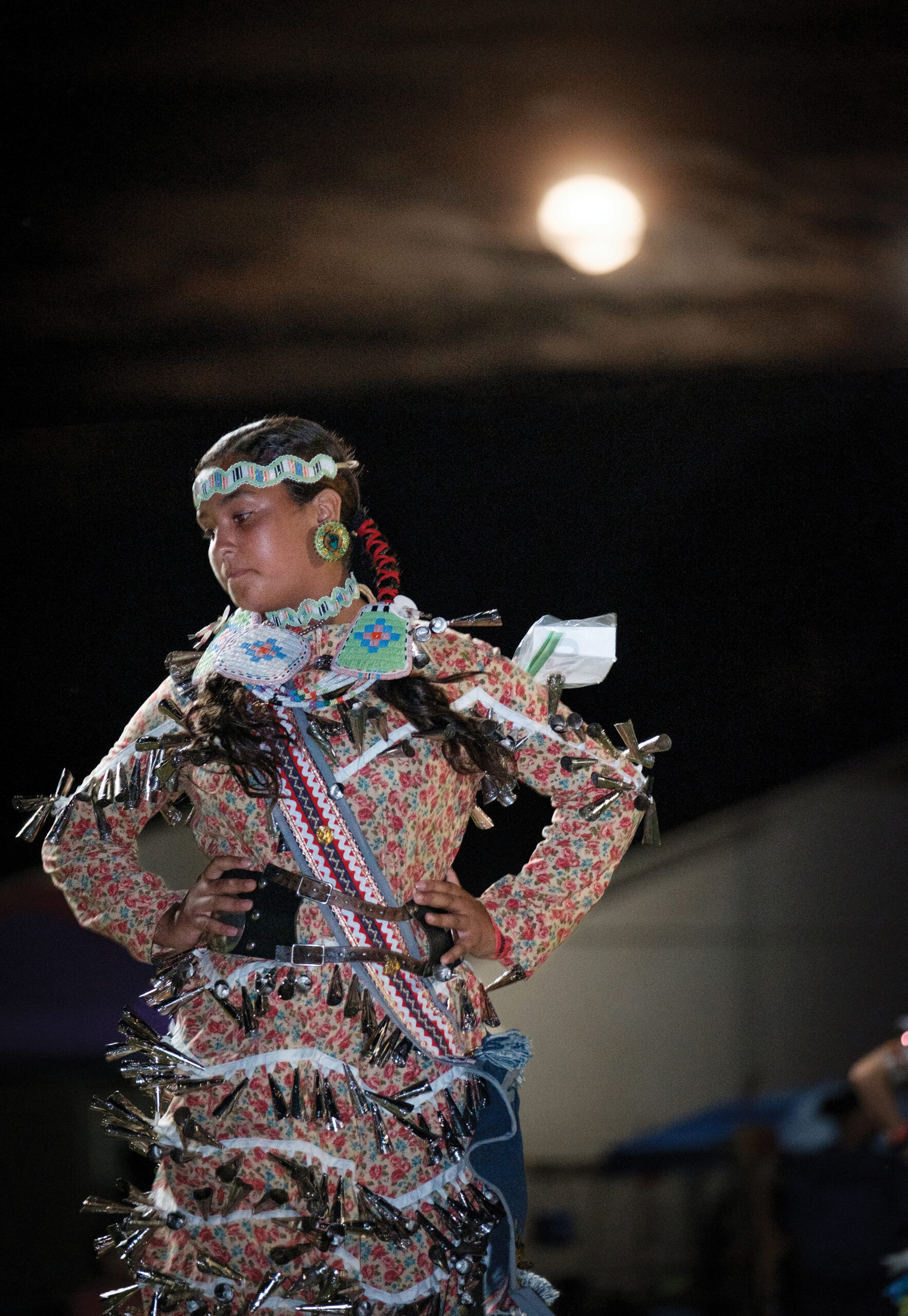
The Native American experience during desegregation in North Carolina and in the U.S. in the 1960s is a story left out of many history books and civil rights lessons. While Black, Latino and other minority students fought for equal education opportunities, many (certainly not all) indigenous communities and families fought back against attempts to “assimilate” them into white schools, eradicating their culture.
Their fight for equal rights also meant a fight for a distinct identity.
It’s not just the 1960s. The entire story of North Carolina’s indigenous people is far too often glossed over in middle school and high school civics and history courses. Katie Eddings has taught in public schools for nearly 20 years, and she remembers the old North Carolina history textbooks — back when students still used actual books — and the painfully small amount of ink given to those who lived here before the first Spanish and English settlers arrived.
Thousands of years, she says, reduced to a few short paragraphs.
“The history of North Carolina that we teach to our children doesn’t do justice to the people who were here long before. It doesn’t represent all of the people here,” says Eddings, a Lumbee native who teaches world history at Lee Early College in nearby Sanford.
The American view of indigenous history often begins in 1492, when Columbus sailed the ocean blue. Christopher Columbus was heading west across the Atlantic from Spain hoping to find a western route to “the Orient.” He was not aware two continents stood in the way, and when he reached land, he believed he found India. Hence, he called the people he found “Indios,” or in English, “Indians.”
What happened before that is a more difficult story to tell, because indigenous people kept no written records, only stories passed through generations. The first written accounts came from outsiders who found their customs to be strange and their behavior to be “savage.”
Columbus’ arrival would mark the beginning of a slow, brutal genocide of Native Americans through violence, disease and forced acculturation. Multiple studies have found that in the century following Columbus, about 90 percent of indigenous Americans died from “wave after wave of disease,” along with mass slavery and war (researchers have called it “The Great Dying”). Scientists from the University College of London claim the European colonization of the Americas resulted in so many deaths, it contributed to climate change and temporary global cooling.
More than 100,000 Native Americans were believed to be living in what is now North Carolina in 1550. That number would fall to about 20,000 by the 1800s.
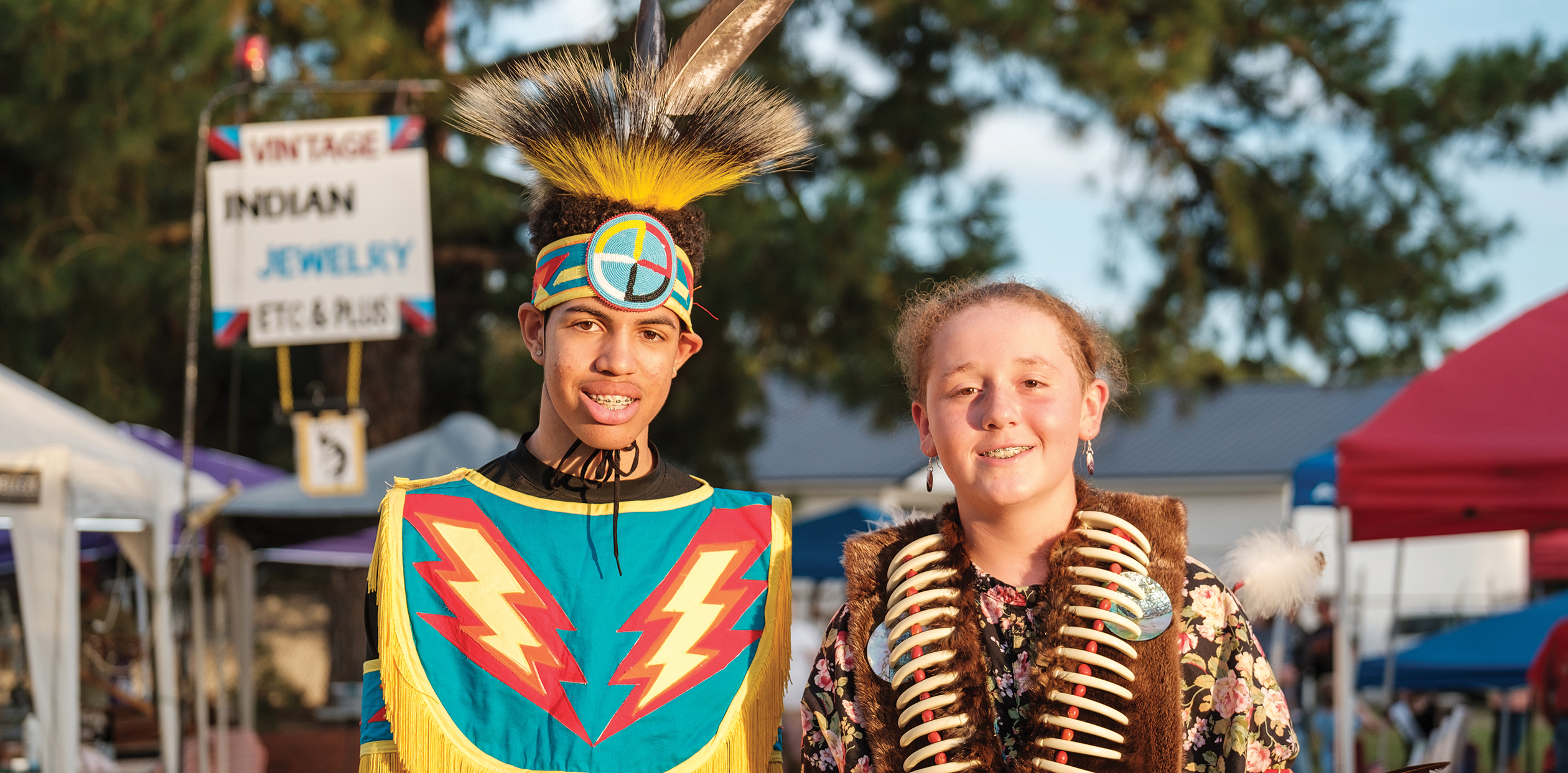
Roughly 25 known tribes existed in North Carolina when Europeans arrived, including the Cape Fear near Wilmington, the Chowan and Hatteras along and near the Outer Banks, the Cherokee and Catawba in the west and the Tuscarora, Eno, Shakori, Woccon and Sissipahaw in the Piedmont area.
These tribes were initially friendly and (mostly) willing to trade and assist Europeans who landed on the barrier islands of what is now North Carolina in 1584. Those future colonists were met by a group of high-ranking native people who were fascinated with English clothing, ships and jewelry. But relationships with the English would soon sour. In 1587, a permanent English settlement was established on Roanoke Island. Three years later, when English ships returned with supplies, they found the colony deserted — the word “Croatoan” carved into the palisades and “CRO” into a nearby tree the only clues left behind.
The story of the “Lost Colony” became the stuff of legend, but the story has also lent to a negative historical image of Native Americans (despite no proof to this day that Croatoan Indians had anything to do with the disappearance). One theory is that the settlers assimilated with the tribes to ensure survival.
The next 300 years would not be kind to native North Carolinians. In 1663, England’s King Charles II issued a decree for the British Empire to seize all land in North America between the northern border of North Carolina to the southern border of Georgia. Ownership of indigenous people’s lands was bestowed upon English families, and skirmishes erupted as a result.
In 1711, the Tuscarora in the central part of the state attacked colonial settlements in an effort to drive them from their lands. A two-year war ensued, ending with a South Carolina militia (backed by other tribes) defeating the Tuscarora, who lost nearly 1,000 people either killed or sold into slavery.
When President Andrew Jackson signed the American Removal Act a century later in 1830, more than 17,000 Cherokees in the western part of the state were forcibly moved to reservations in Oklahoma, part of a network of routes over 5,000 miles long covering nine states known as the Trail of Tears. Historians believe more than 4,000 Cherokee alone died as a result of the journey.
Those who’ve written and taught America’s history in the past have either ignored these tragedies, glossed over them or presented them as unfortunate consequences of a young nation’s growth.
Many are working to change this view. More importantly to Eddings, who was named Teacher of the Year in North Carolina’s North Central Region in 2019, there are more people in this country willing to listen.

“I think younger people are more willing now,” she says. “Social media and wider availability to this [more detailed version of] history has made this possible. People are more open to hearing all sides and having these sometimes difficult discussions.”
In 2021, President Joe Biden signed the first presidential proclamation of Indigenous Peoples Day, which refocused a federal holiday that since 1792 (300 years after his arrival in the Americas) celebrated Columbus. While the proclamation has since sparked controversy — much of it related to the Critical Race Theory debate currently prevalent in the political realm — it has unquestionably shined a light on Native American history and cultures in North Carolina and across the country.
Eddings sees the debate as healthy for her students. She believes in presenting all angles in her classroom, letting her students do their research and decide their own viewpoint when it comes to this country’s history.
“I was asked several years ago, ‘Do you think Christopher Columbus was a bad guy?’ And my answer is, ‘That’s not what I’m teaching,’” Eddings says. “His journey, why he took that journey — those are the important things. There are bad things that happened, but let’s look at what we’ve learned from what happened. Let’s talk about things not everybody is aware of.”
For example, the Battle of Hayes Pond in 1958 saw Native Americans and African Americans confront members of the Ku Klux Klan at their rally in the town of Maxton and drive them out of the area for good. The event made national headlines. LIFE Magazine wrote about it. Newspapers across the country celebrated those brave enough to stand up to hatred.
Eddings took a recent trip to Australia and witnessed that country’s Reconciliation, a process that began in 1991 and focused on the improved race relations between the nation’s population and the Aboriginal and Torres Strait Islander people indigenous to the land. For those people, Australia’s colonial history was characterized by “devastating land dispossession, violence and racism.”
“They have acknowledged their history and embraced it,” Eddings says. “Do we need Americans today to apologize for what the colonists did? No. But do acknowledge that I have a language, I have these traditions, and I have this history that is real to me.”
In his written assessment of the Tuscarora people in 1709, colonial settler and explorer John Lawson saw the good in them. But his glowing description would do little to change the course of history for the Tuscarora, nor did it alter his own fate. Lawson was killed by the Tuscarora two years later, a spark that would ignite the war to come.
“They are really better to us than we are to them; they always give us victuals at their quarters, and take care we are arm’d against hunger and thirst. [Yet] we look upon them with scorn and disdain, and think them little better than beasts in human shape, though if well examined, we shall find that, for all our religion and education, we possess more moral deformities and evils than these savages do, or are acquainted withal.”

Over the span of two weeks in November — in commemoration of National Native American Heritage Month — Campbell University hosted a Coharie speaker who spoke to social work students about cultural awareness, and it hosted a heritage event in the student union that included traditional dance performances while inviting students and faculty to take part.
Those events, coupled with the commission’s recent meetings and plans for a training program for state tribal leaders, have led to a Native American presence on campus previously unseen. It’s been a pleasant surprise for students like Dean Locklear, a junior political science major from Garner and a native Lumbee American Indian.
Locklear met Bryant during his first year at Campbell, and as he got to know the fellow Lumbee better, he became more interested in indigenous history. When he joined the Ester Howard Student Research Fellows program last summer with a group of six other students, Locklear’s project allowed him to dig deeper into this past — his research dealt with land acknowledgement statements, formal documents that recognize indigenous groups as “traditional stewards of the land.” His work focused on Virginia, North Carolina, South Carolina and Georgia, and he created his own database and compared land statements with archaeological evidence and historical documentation of Native Americans in the 18th and 19th centuries.
In his research, he learned about Harnett County’s indigenous history and the people who formed communities here long before there was a Campbell University. The project did more than educate Locklear, it helped form a deeper connection with his people and his tribe’s past.
“I think the first thing I learned was just how little I knew about Native American history,” Locklear says. “I am a Native American, but I grew up outside of the Lumbee community. I didn’t have a lot of friends like me, and I didn’t go to schools that had a lot of Native American people. So that history was never prioritized for me. It’s just not a big part of the [high school] curriculum. I’m hoping that my project will help play a role in changing the way we teach this history.”
Locklear dedicated his project to his paternal grandparents. His Lumbee grandmother was the first person to review the final draft.
“Getting to share that with her was a really rewarding experience.”
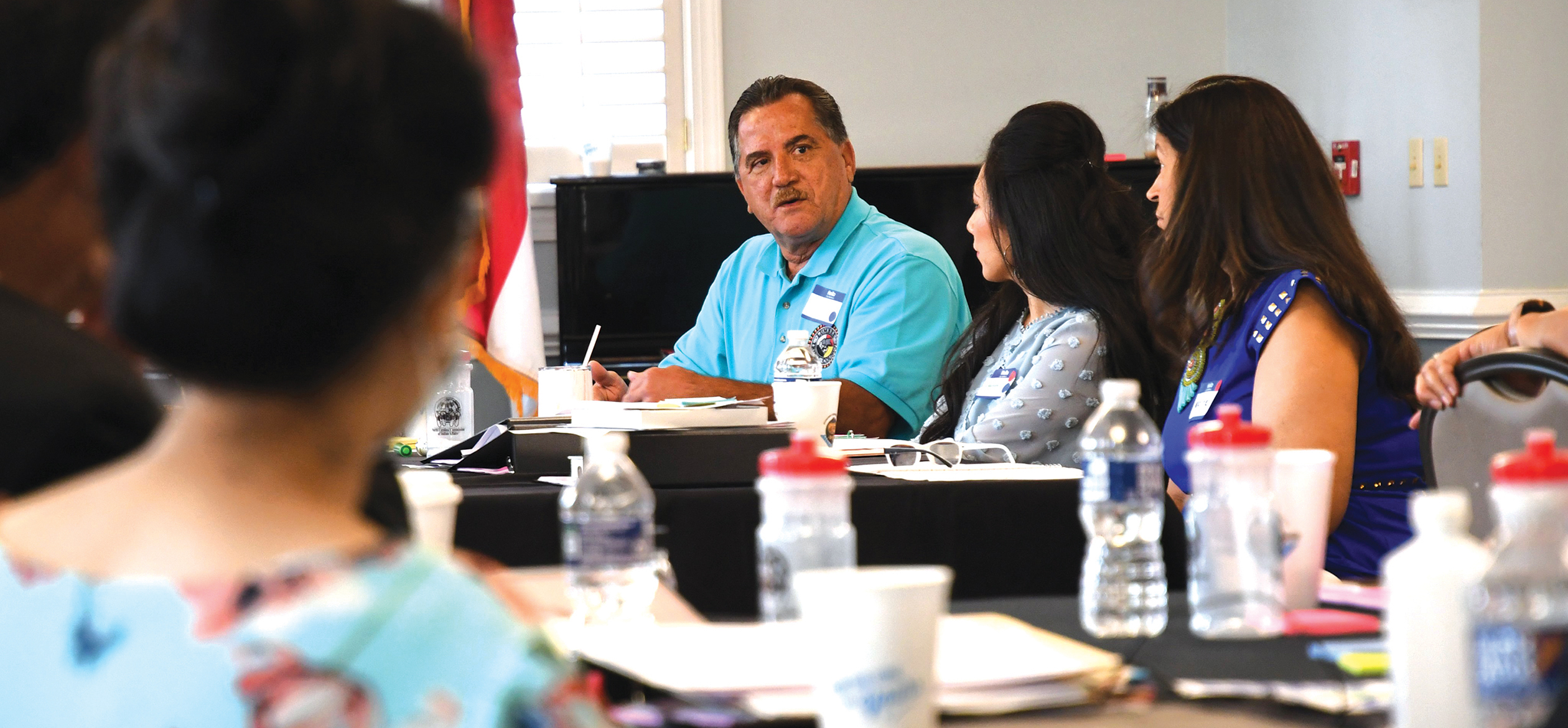
Only about 1 percent of students at Campbell University identify as “American Indian,” though that number might jump a point or two when factoring in students of multiple races or ethnicities. It’s a number that Bryant hopes to see grow in the coming years to more closely match the population in Harnett (2 percent) and nearby counties like Sampson (4 percent). Roughly 43 percent of residents in Robeson County — just an hour away — are listed as American Indian.
Campbell’s increased presence in those communities is a win-win, Bryant says.
“If you have students in these communities looking at colleges, then hopefully they’ll consider Campbell because of these relationships,” he says. “And at the same time, Campbell gets to see the needs of these tribes, and hopefully we have the resources to address those needs and help them out.”
When Bryant first reached out to Greg Richardson, the executive director of the N.C. Commission of Indian Affairs, he pitched Campbell University — its facilities and its central location to the state’s eight recognized tribes — as a viable host for at least one of the group’s quarterly meetings. The commission met for the first time in Buies Creek in 2021 and returned for a meeting in the summer in 2022.
“Campbell is a place where we can come together in a more formal setting and maybe host weekend-long sessions and train our tribal leaders and enhance their ability to run programs more effectively,” Richardson said over the summer, before the “leadership program” idea was a real thing. Ricky Burnett, the commission’s chairman, said having a “university setting” was a positive thing for the group — the setting alone fosters a desire to learn and improve.
In the past year, students and faculty from Campbell’s medical school, pharmacy school and Public Health program have set up mobile health units in the Coharie community to offer free COVID testing and vaccinations. Public Health also hosted an Alzheimer’s workshop — Native Americans in North Carolina are 50 percent more likely to die from Alzheimer’s disease compared to whites, according to a recent study.
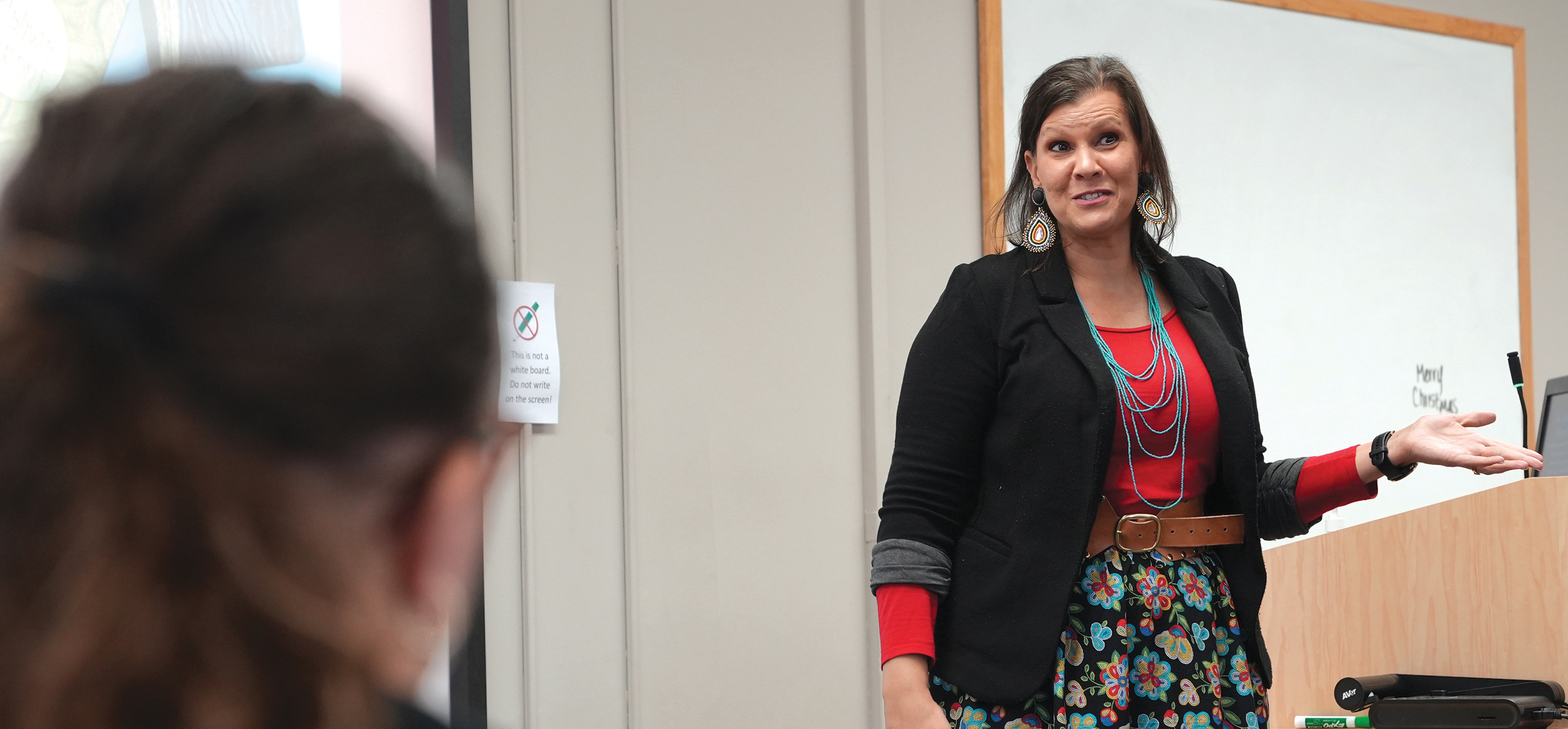
The upcoming leadership program will be the next step in the growing partnership between Campbell and the commission. Al Bryant, Campbell Executive Vice President John Roberson and administration from the Lundy-Fetterman School of Business met with Lumbee tribal leaders in October to lay out the blueprints of the program — commission representatives Danielle McLean and Tammy Maynor (both of the Lumbee Tribe) listed their wants and needs while business school officials presented training options.
“It’s just imperative that we have strong leaders representing our people,” says Maynor, the director of governmental affairs for the Lumbee Tribe. “I feel like our tribal leaders mostly learn on the job, and by the time they’re ‘trained,’ they’re gone. Every six years, their terms are up, and they’re out. Our budgeting processes are so cumbersome. We need leaders we can trust in these roles, and that goes back to leadership development. We need leaders who think about the bigger picture and think about what’s important for us to grow as a tribe.”
Before the N.C. Commission of Indian Affairs was formed in 1971, these ideas of growing leaders from within and becoming a stronger voice in state and federal government seemed far-fetched. The commission was born during the Civil Rights era and the lesser-known American Indian Movement in the late 60s, early 70s. According to Richardson, the commission provided the first chance for tribal leaders to work directly with the state to address concerns and set the stage for positive socioeconomic change.
One program born from the commission was the Educational Talent Search Program, which offers school and career counseling to young people ages 11-27 in counties where test scores are low and unemployment levels are high. Other programs focus on job development, services for the elderly and disabled, health awareness and substance abuse prevention. The commission also helps with coordinating and sponsoring events like the N.C. Indian Unity Conference, Native American Heritage Month and the N.C. Indian Senior Citizens Conference.
Greg Jacobs has seen the commission grow and mature over the last 50 years, and he credits its formation for opening the doors and providing opportunities for North Carolina American Indians today.
“When it started, it’s like we suddenly had this voice in the state that we didn’t have before, and there was this sense of pride that ran through our various communities that we were making progress,” Jacobs says. “I remember it felt like a ray of sunshine was here. A ray of hope was born.”
Not only did the commission get tribal leaders’ feet in the door in Raleigh, it sparked a revival of culture and traditions among tribes. The Coharie’s first pow wow was born around that time — the event last September enjoyed its 52nd anniversary.
“It’s almost like we were underground for so long,” Jacobs says. “It almost felt like we weren’t supposed to be here. We weren’t supposed to exist. It’s like when the commission was formed, the wall we hid behind for so long came down. And things started to flourish. We started practicing our traditions, we had better hope for education, we had better employment opportunities, and we had more access to political figures. And it’s as exciting today as it was then. I remember it very well. It changed my life.”
Fifty-one years later, he also feels excitement about the growing partnership with Campbell University.
“It’s a perfect situation,” he says. “Having Campbell in our backyard and having access to the school just down the road, it’s a relationship I hope we continue to foster, because in the future, it’s going to be transformative to a lot of lives.”
Before he came to Campbell in 2019, Bryant served 19 years as a professor, program director, department chair, associate dean and finally dean at UNC-Pembroke, a school that got its start in 1887 (the same year as Campbell’s founding) as the Croatan Normal School, a school established to train American Indian teachers.
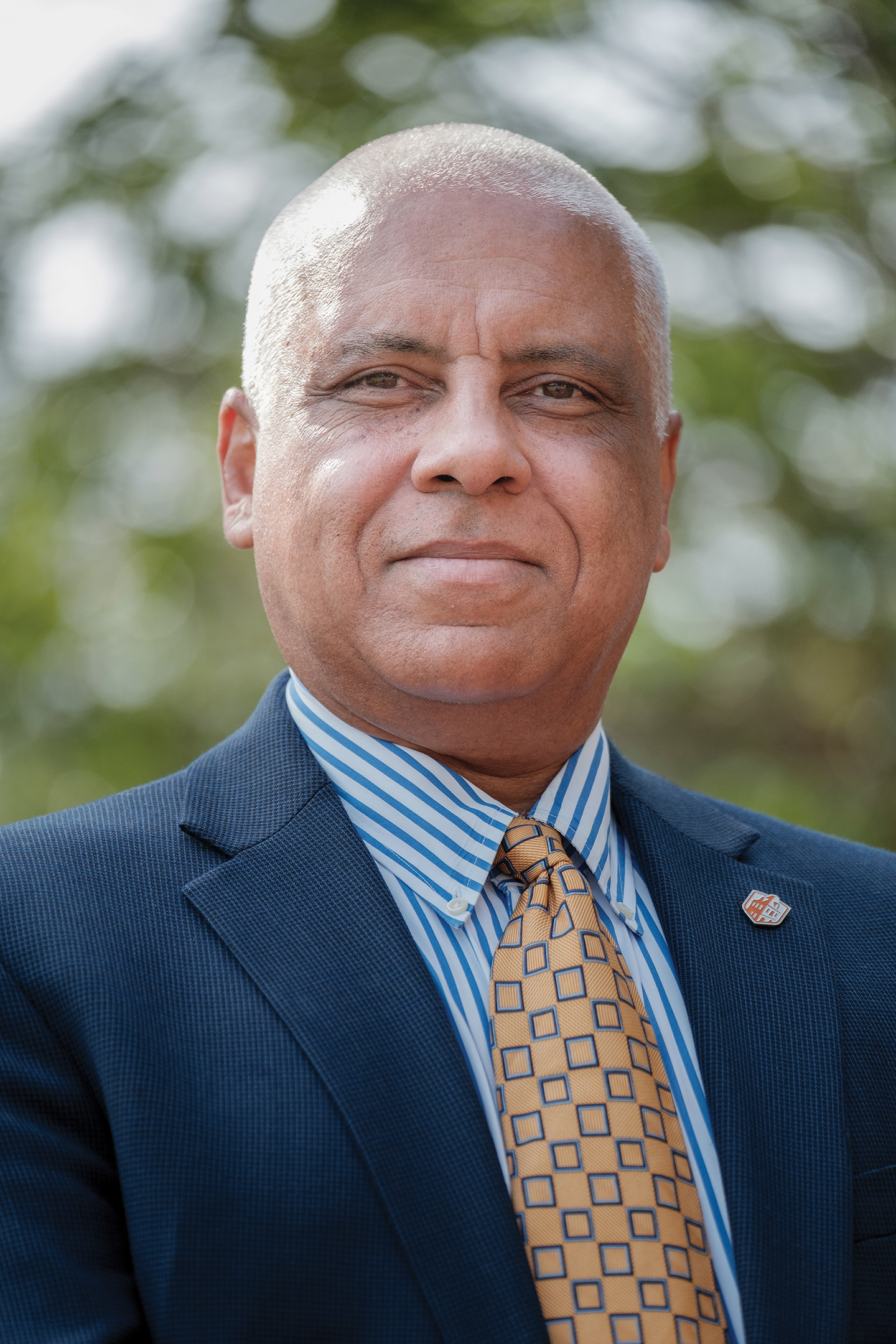
Bryant was director of the Southeast American Indian Studies Program at Pembroke, where 13 percent of the student population is American Indian.
Bryant wasn’t sure how on board a school like Campbell would be with his starting programs like the leadership program or inviting the commission to use its facilities to conduct its business. But, he says, Campbell has been nothing but welcoming to these projects.
“When I present ideas like this, the answer hasn’t been, ‘Maybe down the road’ or ‘Maybe that’s something we can look into.’ Instead, the answers have been, ‘Let’s talk about it now’ or ‘Let’s see what we can do to make this happen,’” Bryant says. “Campbell has been very open minded about everything involving this community.”
As for why he feels the need to develop these partnerships and launch these programs, Bryant says it’s a responsibility he feels as a university dean and leader in higher education.
“I’ve been blessed,” he says. “In my role, I have an opportunity to be a role model to young people. So if others like me can see me and think, ‘I can one day work at a place like Campbell and make a difference,’ then maybe they’ll be open to opportunities they didn’t know were out there.”

